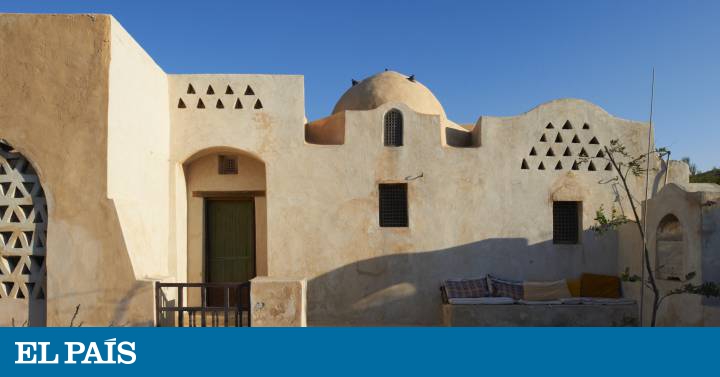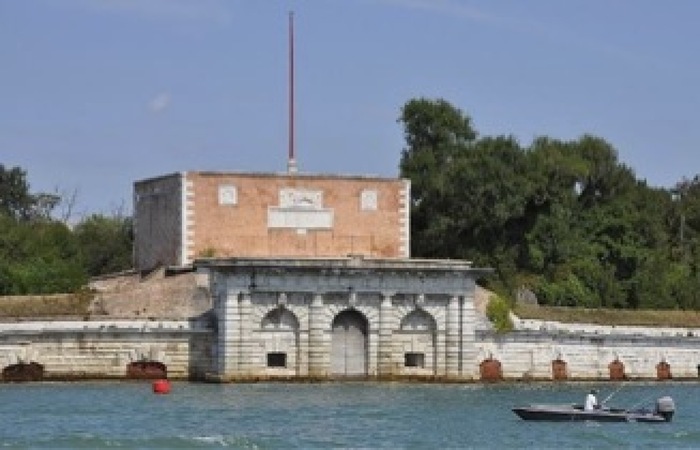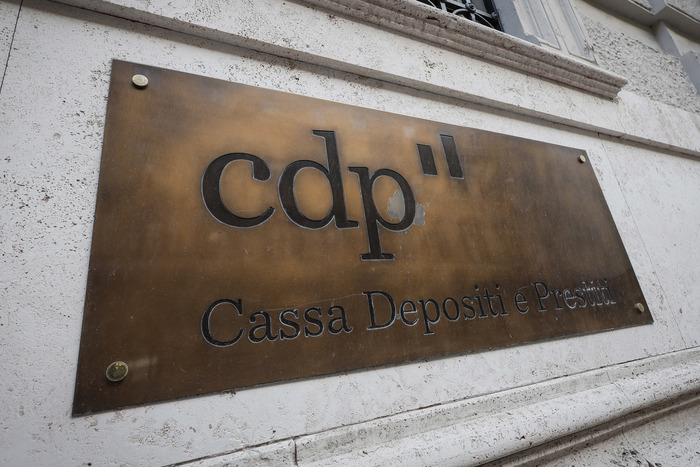Picturesque, the adjective that we frequently use to describe architectures that build a solid and rooted identity, but far from modernity, comes from the English
picturesque
and means worthy of appearing in a painting (
picture
). The picturesque in architecture is associated with the vernacular. He usually works with traditional resources - such as the lattices in the sunniest part of the planet, the whitewashed houses in southern Spain, the colored shutters of the Mediterranean or the gabled tile roofs of Swiss villas - and, with that reference to culture of the place, indicates respect and builds identity.
The work of the considered greatest and best Egyptian architect of the 20th century, Hassan Fathy (Alexandria 1900- Cairo, 1989) can, from a foreign perspective, be considered picturesque. However, it has universal ambition, recreates a place, has been left out of time, built identity, worked for the sustainability of the planet, stood up to prejudices and tried to find a way to build with very little for housing to be truly a universal right. He got it? Surely better than modernity. Did you really work for those most in need? He promoted self-construction, but his houses were fundamentally for intellectuals and artists. What is then the validity of his work? Curated by José Tono Martínez, the exhibition at the Casa Árabe in Madrid,
Hassan Fathy a Contracorriente
try to answer those questions.
Hassan Fathy, in his study in the Ali Effendi Palace, Dar el-Labbana district, Cairo.
Christopher Little Aga Khan Trust for Culture /
Fathy got to know his country by traveling from Cairo to Alexandria. That move, between his father's house and that of his mother's family, marked his way of looking. The father, an examining magistrate, avoided the field "a place full of mosquitoes and contaminated water." Fathy remembers that he only came there to collect the rent for his land. The architect was 27 years old the first time he stepped on non-urban land. His mother, on the other hand, had grown up in the country. In the city he missed the animals. He knew how to be self-sufficient. She was convinced that the anxiety of the city disappeared in the countryside. It was she who awakened Fathy's love of nature to the point that, after studying sculpture and violin, he wanted to be a farmer before finally becoming an architect.
Trained in Cairo and later in Paris, Fathy was a rich young man who decided to work more than for the poor as well as the poor: he designed countless houses for artists.
After a modern initial phase in which in a primary school he devised a flat roof and used windows with aluminum joinery and erected modern buildings such as the Bosphoro casino or the Mustafá-Bey printing house - both demolished - Fathy returned to earth: to the courtyards and to the lattices, that is, to the traditions and the logic of the place.
Detail of the dome and clay latticework of Casa Casaroni, 1981. Aga Kahn Trust for Culture
The vernacular recovery of elements such as patios, materials such as sun-dried brick or techniques for the construction of domes and vaults without a frame, has established its contribution and makes it exportable. He designed with the universal language of countries with excessive sunlight. And he designed with the universal language of the poor: the scarce and local means used for centuries.
The curator of this exhibition, José Tono Martínez, presents him as "a visionary, one of the founders of sustainable architecture based on vernacular traditions in times of the International Style." He explains that Fathy wanted to empower farmers to produce their own materials. "He did not want Orientalism to replace the Orient." "Living with the desert meant for him to isolate himself from the desert, and create a sheltered interior space, with a source and well the symbols of life." Martínez highlights the importance of the artisans, who decorated the symbolic entrance door with symbols and built with pre-technological techniques. And he explains, in a catalog published by Ediciones Asimétricas, that his opposition to repetitive architecture earned him enemies in the field of industry and large-scale construction.
Detail of the mud latticework in the New Gourna village (1948), where the population that occupied the archaeological site of Luxor was moved. Matkaz Kacicnik. Aga Kahn Trust for Culture
For the architect of the poor that he had a reputation for being, Fathy worked as an architect of the powerful, that very reputation had made him an artist. What made a young bourgeois trained in Paris stand up to Le Corbusier and take an interest in the poorest architecture? A visit to his brother in Aswan. In 1941, he learned about the traditional Nubian technique of building vaults and domes without any frame structure, but with more straw than brick for lightness. Knowing this technique made him understand the meaning of the architecture that he did not stop building. Beyond honoring the logic of the
genius loci
, its architecture rebuilt the identity that had barely two decades of independence (1922) and that was part of the British protectorate
Fathy seeks in the roots, in the constructive tradition of non-architects, the way to recover Egyptian architecture and the landscape of his country. For him, as for Dante, the new was simply what did not deserve to be old. Do not miss this exhibition that has examples of architecture built with clay in Spain and with the gaze of the photographer Hannah Collins entering the architecture of Fathy.


/cloudfront-eu-central-1.images.arcpublishing.com/prisa/4FLE5PNY3VBLRCDNGWKQRJSUN4.jpg)






